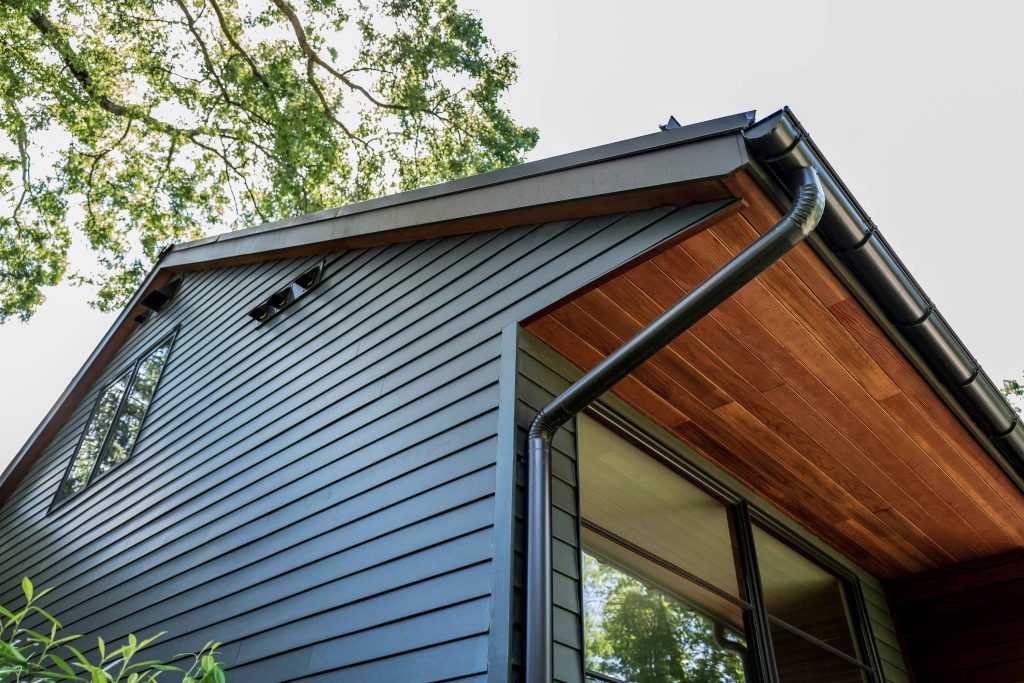Siding isn’t just about looks; it’s your home’s first line of defence against weather, wear, and time.
Knowing how long siding lasts can help you stay ahead of repairs and avoid surprise costs.
In this guide, we’ll break down the typical lifespan of popular siding materials and what impacts their durability, so you can plan smart and protect your home for the long haul. Many homeowners also ask, what is LP Smart Siding and how does it compare to other options in terms of longevity and performance?
How long does siding last?
Siding can last anywhere from 20 to 50 years, depending on the material. Vinyl and fibre cement siding are particularly durable, while wood may need more frequent maintenance.
Key Takeaways
- The lifespan of siding varies depending on the material, climate, and maintenance.
- Different siding materials, such as vinyl, wood, and fibre cement, offer varying degrees of durability.
- Regular maintenance is essential to extend the lifespan of siding and avoid costly repairs.
Types of Siding and Their Lifespan

The lifespan of siding depends largely on the material it is made from.
Different materials have different strengths and weaknesses, so it’s important to understand how each one performs over time.
Vinyl Siding
Vinyl siding is one of the most popular choices for homeowners due to its affordability and low maintenance.
It is made from PVC (polyvinyl chloride) and is known for its resistance to moisture, insects, and fading.
On average, vinyl siding lasts between 20 and 40 years, but with proper care, it can last even longer.
Advantages
Vinyl siding is resistant to rot, mildew, and insects. It is also very easy to clean and requires minimal upkeep.
Disadvantages
Vinyl can crack or become damaged in extreme weather conditions, such as high winds or hail. It also tends to fade over time, especially in areas with intense sunlight.
Wood Siding
Wood siding is a classic and natural option that gives homes a rustic and timeless look. However, it requires more maintenance than vinyl or fibre cement siding.
Wood siding can last anywhere from 20 to 40 years, depending on the type of wood, climate, and care it receives.
Advantages
Wood siding offers excellent insulation and a natural aesthetic. It can be stained or painted in various colours to suit your style.
Disadvantages
Wood siding is vulnerable to rot, termites, and moisture damage. It requires regular sealing, painting, or staining to protect it from the elements.
Fibre Cement Siding
Fibre cement siding is made from a blend of cement, sand, and cellulose fibres. It is one of the most durable siding options available, with a lifespan of 30 to 50 years.
Fibre cement siding is resistant to fire, termites, and rot, making it an ideal choice for many homeowners.
Advantages
Fibre cement siding is highly durable, fire-resistant, and low-maintenance. It is available in a variety of styles and colours, including options that mimic the appearance of wood.
Disadvantages
Fibre cement siding is heavy and can be more difficult to install than other materials. It also requires periodic painting to maintain its appearance.
Metal Siding (Aluminium or Steel)
Metal siding, including aluminium and steel, offers excellent durability and a sleek, modern look.
Aluminium siding typically lasts around 20 to 30 years, while steel siding can last up to 50 years with proper care. Metal siding is resistant to fire, insects, and rot.
Advantages
Metal siding is highly durable, weather-resistant, and requires little maintenance. Steel siding can withstand extreme weather conditions, including hail and high winds.
Disadvantages
Metal siding can be prone to dents and scratches, especially if it’s made from aluminium. Additionally, steel siding may rust if it’s not properly coated or maintained.
Brick and Stone Veneer
Brick and stone veneer are highly durable options that can last a lifetime. These materials are known for their strength, fire resistance, and low maintenance.
While the veneer layer may need repairs after 50 years, the underlying structure can last much longer.
Advantages
Brick and stone veneer offer excellent protection against the elements and provide an elegant, classic look. They are resistant to fire, rot, and insects.
Disadvantages
The main downside of brick and stone veneer is its cost. It is generally more expensive than other siding materials, and the installation process can be labour-intensive.
Factors That Affect the Lifespan of Siding
While the material plays a large role in determining the lifespan of siding, other factors can also affect how long your siding will last.
Understanding these factors can help you take better care of your siding and ensure that it lasts as long as possible.
Climate
The climate in which you live plays a major role in how long your siding will last.
In regions with extreme weather, such as harsh winters or intense summer heat, siding is subject to more wear and tear.
Cold Climates
In areas with cold winters, siding is exposed to freezing temperatures, snow, and ice. This can cause some materials, like wood or vinyl, to crack or warp.
Hot Climates
In hot climates, the intense sun can cause materials like vinyl to fade and deteriorate over time.
Materials such as fibre cement or metal tend to perform better in these environments.
Coastal Climates
Saltwater and humidity can cause corrosion and wear on siding, especially metal and wood materials.
If you live near the coast, it’s essential to choose a siding material that can withstand these conditions.
Frequently Asked Questions (FAQs)
1. How long does vinyl siding last?
Vinyl siding typically lasts between 20 and 40 years, depending on the quality of the material and the maintenance it receives.
2. Can I paint my wood siding to extend its life?
Yes, painting and staining wood siding can help protect it from the elements and extend its lifespan. Regular maintenance is key to preventing rot and deterioration.
3. What type of siding lasts the longest?
Brick and stone veneer tend to last the longest, often lasting for 50 years or more. Fibre cement siding is also known for its durability and longevity.
Conclusion
The lifespan of siding can vary depending on the material, climate, and maintenance, but with the right care, your siding can last for decades.
Insulated vinyl, fibre cement, wood, and metal are all popular options, each offering different benefits.
Regular maintenance and timely repairs will help you get the most out of your siding, so you can keep your home looking great and protected from the elements for years to come.








